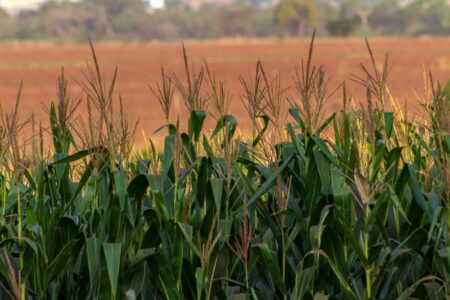Many agricultural projects suffer from losses due to natural hazards. Agricultural losses can be devastating to projects, but mitigation can help reduce these losses. The benefits of natural hazard mitigation can be measured by avoiding loss of income and can also extend to indirect effects from the mitigation projects. For example, a farmer may reduce the production costs of adjacent land by installing irrigation. In addition, the project may reduce the water use of neighboring farmland.
Adequate consideration of natural hazards can reduce project vulnerabilities. Incorporating this information into agricultural investment projects is possible through several analytical methods. These techniques include land settlement, irrigation, and soil conservation. These projects may be part of an integrated development package. This approach is essential for developing countries where natural hazards can impede development projects. If adequate consideration is given to natural hazards, these projects can be more effective and profitable.
There are various methods to estimate subjective probabilities for various natural hazards. A triangular distribution method is a simple way to evaluate these probabilities. The analysts can then calculate the most likely, highest, and lowest yields. The analysis can also determine the variance and mean of the probability distribution. Considering the natural hazards that may affect the project’s benefits and costs, these tools can help decision-making.
Hydrological and meteorological hazards can both cause large-scale damage to agriculture. Both drought and flood are significant contributors to famine. The 1931 floods in Central China are the deadliest natural disasters in recorded history, killing three or four million people. By preventing damage caused by natural hazards, farmers can improve their yields.

Impact of climate change
While the long-term average effects of climate change will be necessary for global food production, extreme events and changes in year-to-year variability will be more critical for the future of the food supply. Recent studies have shown that crops have experienced significant falls in productivity due to anomalously low precipitation events. Even small increases in average annual rainfall can significantly affect crop productivity.
The effects of climate change on agriculture are likely to combine with other factors such as human health and labor availability. A pivotal threat to agriculture is malaria, and many rural people in developing countries also depend on secondary nonfarm livelihood strategies. One such strategy is tourism. The potential impact of climate change on tourism will be significant, as climate change has already affected tourism in developing countries. A sustainable approach to farming is therefore necessary. In the meantime, the effects of climate change on agriculture will need to be understood in terms of socioeconomic and technological development.
The warming trend is projected to increase temperatures worldwide. This is damaging to crops in arid regions, but it will also increase water loss through evaporation. These simulations also indicate that a two-degree increase in local temperature could boost wheat production by 10% in the mid-latitudes but decrease it in low-latitudes. Crop yields will also vary widely based on the crops grown in the region.

Impact of floods
Floods are a serious threat to both farmers and consumers. Flooding can destroy crops and livestock, affecting food production and the health of those who live in the affected area. Waterborne diseases and parasites can also wreak havoc on crops, and flooding can disrupt clean water and electricity supplies. Low production can also lead to food shortages. Meanwhile, recovery from a flood is costly, and many farmers may report substantial post-harvest losses.
One of the immediate effects of flooding is oxygen depletion, which causes damage to crops. Water has less oxygen than air, and crops rapidly lose dissolved oxygen when flooded. The temperature of the floodwater also affects plant respiration, and warmer floodwaters deplete dissolved oxygen faster. Additionally, the length of time a crop is submerged during the flood will have the most effect.
Floods can cause long-term mental and physical impacts. The loss of loved ones is incredibly damaging, and the displacement of villagers and livestock increases the risk of waterborne diseases. People cannot access clean water, and they suffer from a lack of food, clean water, and poor sanitation. If the rains are heavy, it will slow down food distribution and raise food prices, further impacting people’s livelihood.

Impact of wildfires
One of the most significant impacts of climate change is a dramatic increase in wildfires in the West. These fires can wipe out crops and livestock and destroy property. Ash-covered fields make harvesting difficult, and farm workers are more at risk than other workers from exposure to the toxic fumes of wildfires. As California is the largest agricultural state in the U.S., fires significantly impact farmers. As a result, new programs have been launched to help protect the state’s farmers from the hazards of wildfires.
Cattle producers suffer more from these fires, and loss of pasture, evacuation from properties, and burns killed more cattle. Most cattle deaths were caused by smoke exposure, and pneumonia and bovine respiratory disease were the most common indirect impact of fires on livestock. Livestock producers reported an increased incidence of bovine respiratory disease related to stress, immunosuppression, and lack of biosecurity.
The study also found that fires in California impact crops far beyond the fire area. These wildfires release pollutants into the atmosphere that can affect the growth of plants hundreds of kilometers away. These pollutants include ozone and aerosols, and they affect both crops and livestock and hurt the environment. In addition to crop losses, wildfires can damage farm buildings and irrigation systems. The smoke from wildfires is also a significant health concern, especially for wine grape growers.














